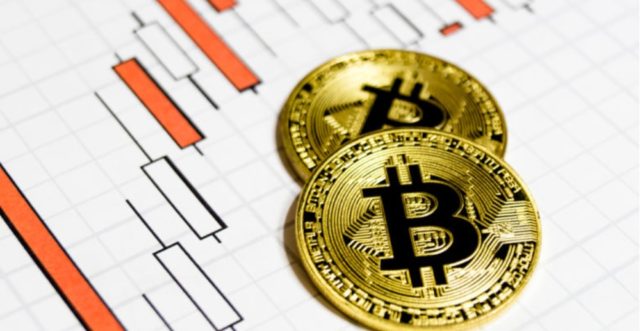- The USD/MXN is planted on Tuesday around 19.23.
- The US dollar rises to two -day maximums in its DXY index but does not advance in front of the Mexican peso.
- The Organization for Economic Cooperation and Development (OECD) reduces the growth forecasts of Mexico and the United States.
- Jolts employment offers increase to 7,391 million in April, above expected.
The USD/MXN tested in the European opening a daily minimum in 19.20 but went up after the US Jolts employment offers to a maximum of the day in 19.28. At the time of writing, the parishes plans around 19.23.
The US dollar gains impulse with Jolts employment data
The American dollar index (DXY) has regained two -day maximum in the last minutes, driven by the DATA OF JOLTS EMPLOYMENT OFFERS OF THE UNITED STATESwhich has shown a rise to 7,391 million in April compared to March 7.2 million, improving the 7.1 million expected by the market.
The green ticket has advanced after the data, rising to 99.32, although it has later lost impulse since at the same time the Factory orders Americans, who fell 3.7% in April, worsening the planned 3% decrease.
On the other hand, caution remains in force due to the lack of progress in tariff negotiations between the United States and China waiting for the telephone meeting that Donald Trump and Xi Jinping will hold this week. The markets are also alert to the increase in the US tariffs and imported aluminum, which will go from 25% to 50% from tomorrow, June 4. Both factors, united to fears due to an increase in US inflation and an economic slowdown, prevent the dollar from moving forward against Mexican peso.
The OECD reduces the growth prospects of Mexico and the United States in 2025
The Organization for Economic Cooperation and Development (OECD) has announced this morning that the growth forecasts of Mexico and the United States.
The North American power will see its GDP grow by 1.6% this year, six tenths below the expected 2.2% provisionally in March. By 2026, the expectation is 1.5% compared to 1.6% estimated.
Mexico takes the worst part of the important countries in Latin America, since only 0.4% will grow this yearaccording to the OECD, well below 1.2% projected in December. In 2026, the forecast is 1.1%, five tenths less than 1.6% previously planned.
The OECD cites the high uncertainty as a reason for this slowdown, adding in its report that “Mexico’s high exposure to the US market, the deceleration projected in the US by 2025-26 and the most restrictive financial conditions could further ballast external and investment demand.”
USD/MXN Price levels
The relative force index (RSI) of 14 continues to inclined down, although with less force than yesterday. In case of continuing to fall, the most important support appears in the minimum of 2025 reached last week at 19.18. Below, there is an intermediate containment zone on 19.11/19.06, where are the soils of October and September, respectively.
Upwards, the initial resistance awaits in the mobile average of 100 periods in time graph, in 19.32. Above waiting 19.45, roof of May 22, and above 19.78, higher level of May registered on day 6.
Mexican weight FAQS
The Mexican weight (MXN) is the most commercialized currency among its Latin American peers. Its value is widely determined by the performance of the Mexican economy, the country’s central bank policy, the amount of foreign investment in the country and even remittance levels sent by Mexicans living abroad, particularly in the United States. Geopolitical trends can also affect MXN: for example, the Nearshoring process (or the decision of some companies to relocate the manufacturing capacity and supply chains closer to their countries of origin) is also considered a catalyst for the Mexican currency, since the country is considered a key manufacturing center in the American continent. Another catalyst for MXN is oil prices, since Mexico is a key exporter of the raw material.
The main objective of the Central Bank of Mexico, also known as Banxico, is to maintain inflation at low and stable levels (in or close to its 3%target, the midpoint of a tolerance band between 2%and 4%). To do this, the bank establishes an adequate level of interest rates. When inflation is too high, Banxico will try to control it by raising interest rates, which makes the indebtedness of homes and companies more cooling, thus cooling the demand and the economy in general. The highest interest rates are generally positive for Mexican weight (MXN), since they lead to higher yields, which makes the country a more attractive place for investors. On the contrary, lower interest rates tend to weaken the MXN.
The publication of macroeconomic data is key to evaluating the state of the economy and can have an impact on the valuation of the Mexican weight (MXN). A strong Mexican economy, based on high economic growth, low unemployment and high confidence is good for MXN. Not only attracts more foreign investment, but it can encourage the Bank of Mexico (Banxico) to increase interest rates, particularly if this fortress is accompanied by high inflation. However, if the economic data is weak, the MXN is likely to depreciate.
As an emerging market currency, the Mexican weight (MXN) tends to rise for periods of risk, or when investors perceive that the general market risks are low and, therefore, are eager to participate in investments that carry a higher risk. On the contrary, the MXN tends to weaken at times of market turbulence or economic uncertainty, since investors tend to sell higher risk assets and flee to the most stable safe shelters.
Source: Fx Street
I am Joshua Winder, a senior-level journalist and editor at World Stock Market. I specialize in covering news related to the stock market and economic trends. With more than 8 years of experience in this field, I have become an expert in financial reporting.




.jpg)
